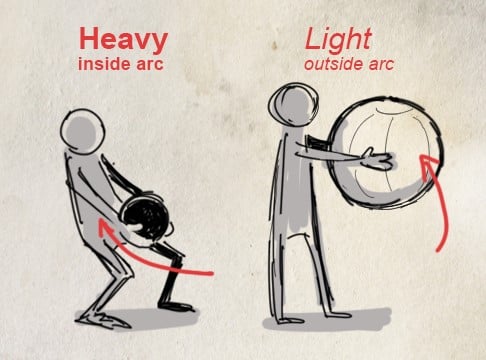
We’re covering the 12 Basic Principles of Animation one principle at a time. Time sure flies, because we’re already on principle 7, which is Arc! Arc is the visual path of an object or action, and it’s essential for all animators. Find out why you need to know about it, what it looks like, and how to use it to improve your own animation.
1. What is an arc?
The visual path of an object or action is called an “arc”. This could be the projectile of a bouncing ball, the path of a moving arm, and even the movements of mouth corners during a dialogue scene. Here are some examples of arc in action:
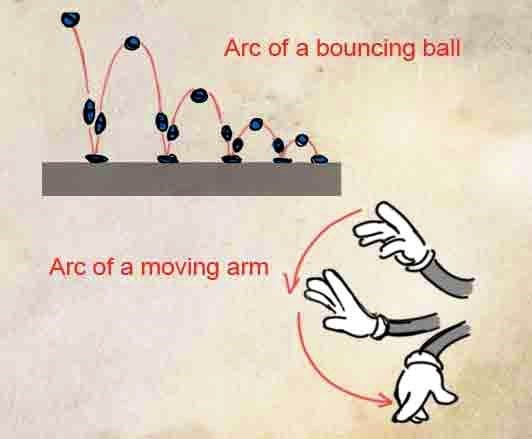
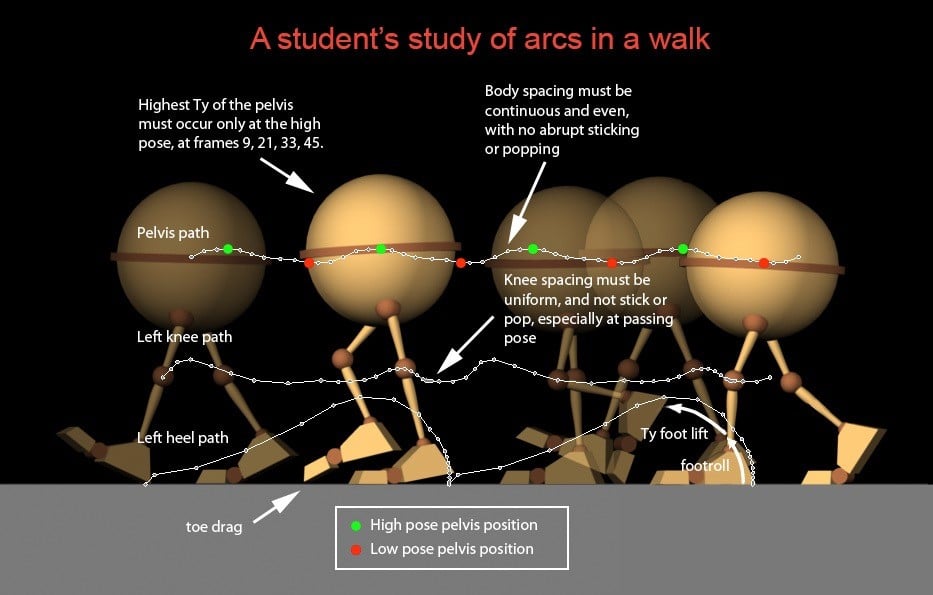

2. Why is Arc important?
The arc is one of the most important tools to make movements realistic and pleasing to the eye. Due to the moving object’s inertia, its path should be smooth unless it’s being interrupted by an external force (e.g. impact). A smooth arc, like a dancer’s movement, is always eye pleasing. On the other hand, an unintended broken arc can reduce the believability of the movement.
This is a short film called Thought of You by Ryan Woodward. The dancers’ movements are so graceful because of the well-polished and continuous arcs.
3. Linear Arc vs. Circular Arc
Arcs are usually circular. Circular arc makes the movement organic. On the other hand, linear or angular arcs can be used for mechanical movement. It really depends on the desired effect. A straight arc gives the movement more power.
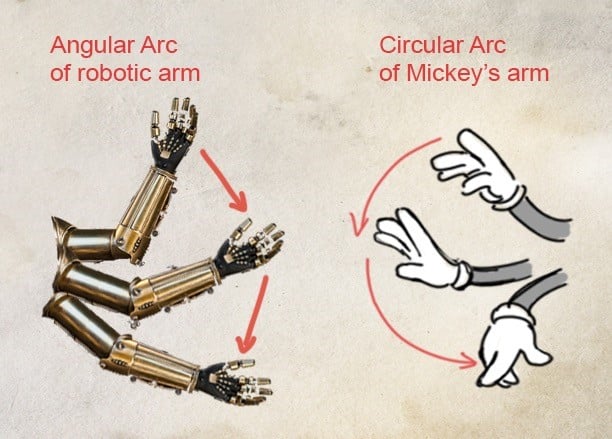
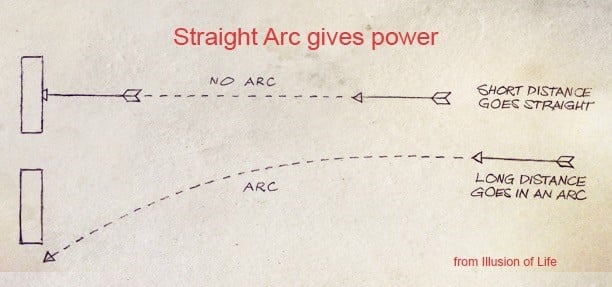
4. The visual signatures of objects
Objects with different builds and weights travel in their “signature” arcs. As mentioned, a robot arm travels on an angular path while a dancer’s arm moves in circular fashion.
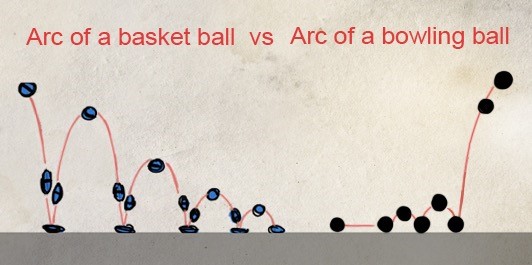
When lifting an object, the path of a lighter object tends to be outward but the heavy one moves closer to the lifter’s body. The audience gets a sense of the object/action simply by recognizing its arc.

5. Arc in Action
Here’s an example of arc application in one of my scenes. There was a conscious effort to make Mater’s tow hook travel in a circular continuous arc.
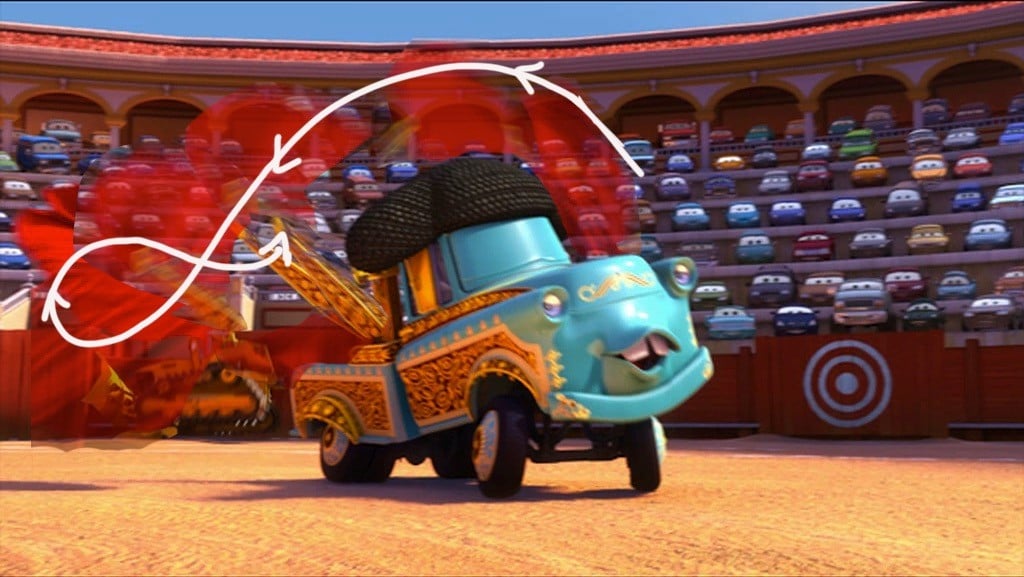
6. Tracking the arc and tip
Most CG animation packages have tools, like motion tracker in Maya, that show the arc of a moving object. Some animators use an on-screen drawing tool to help find the desired shape of the arc. A smooth, circular, polished arc—for example, the figure 8 shape arc—makes the movement especially pleasing on a big movie screen.
When a movement feels stiff, sometimes offsetting the object’s curves can create a more organic arc, here is a demo of such situation.
7. So remember to check your arc!
Hope this helps! You are welcome to send comments to my email via Animation Mentor. Good luck with your arc-tistic animation! 😉

Want to learn from professional animators?
Start your animation journey by learning with professional animators from a variety of studios and career paths! Get more information about Animation Mentor’s Character Animation Courses.




